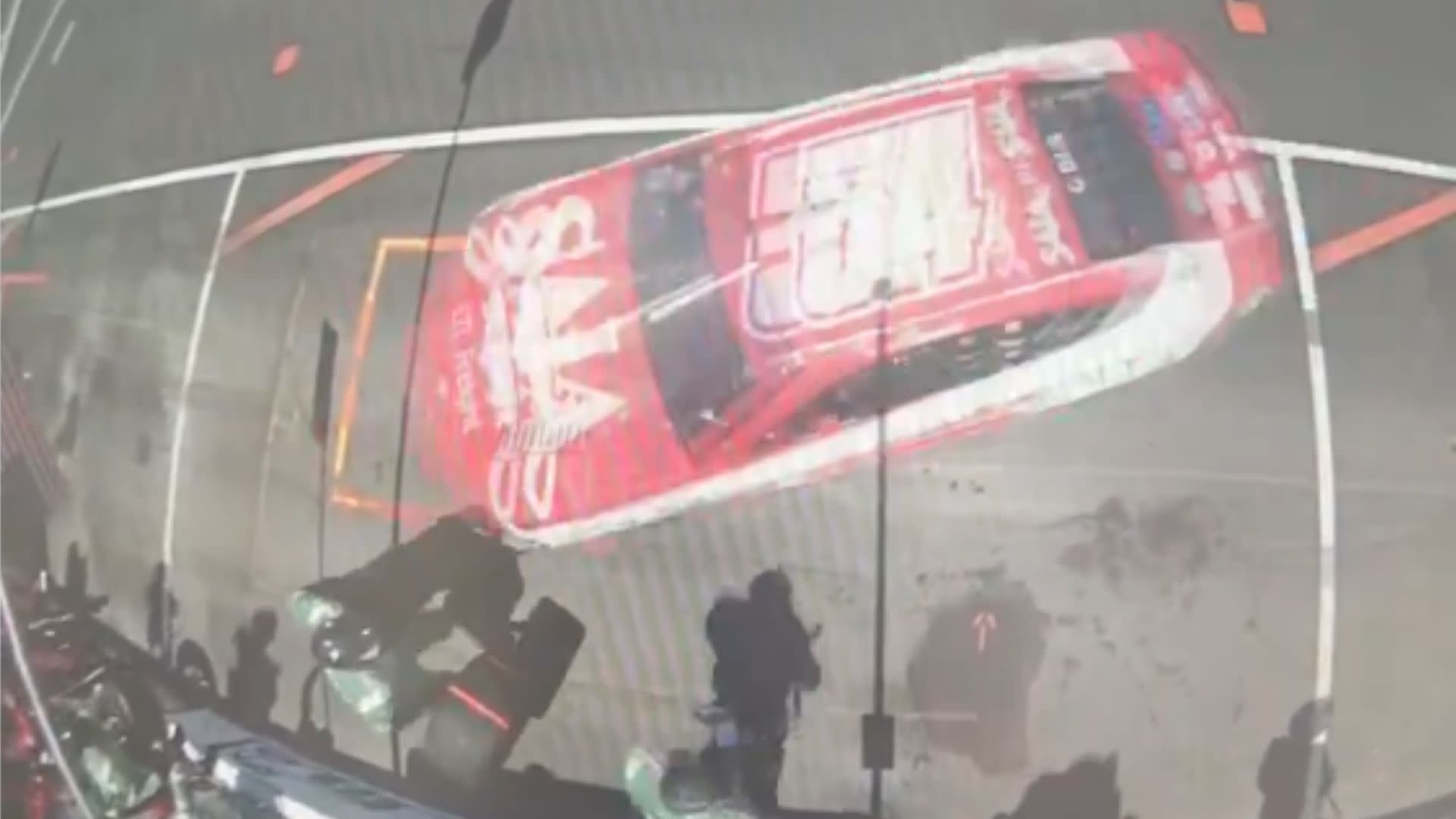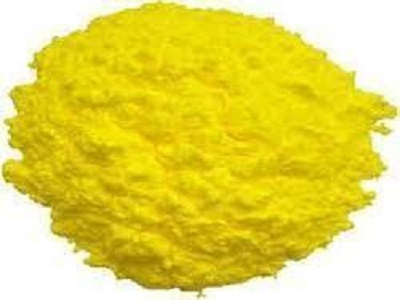Our atmosphere is like one big electrical circuit: Thunderstorms are the batteries that charge it up, and lightning is the current flowing through it. On the ground we see evidence of this circuit when lightning cracks and strikes the ground, or when it lights up deep inside a thundercloud, but high above the clouds lies a secret electrical zoo full of sprites, elves, and jets.
These fantastical terms refer to light displays called transient luminous events or TLEs that occur in Earth’s upper atmosphere during thunderstorms. “TLEs are mysterious, beautiful, and uniquely different from conventional lightning, yet they connect weather, space, and electricity in one dramatic moment. They occur high above the clouds, almost silently, and are invisible to most people—but they reflect powerful processes unfolding deep within thunderstorms,” says Hailiang Huang, a Ph.D. student at the University of Science and Technology of China who studies TLEs.
The very first photographic observations of these events in 1989 captured red flashes streaking across the sky in the blink of an eye. The displays were dubbed red sprites, inspired by characters in Shakespeare’s A Midsummer Night’s Dream, and a medley of other fairytale names followed, as researchers discovered new types of TLEs. Today, scientists are still working to understand these curious phenomena—what causes them, how often they happen, and what they can tell us about Earth’s atmosphere.
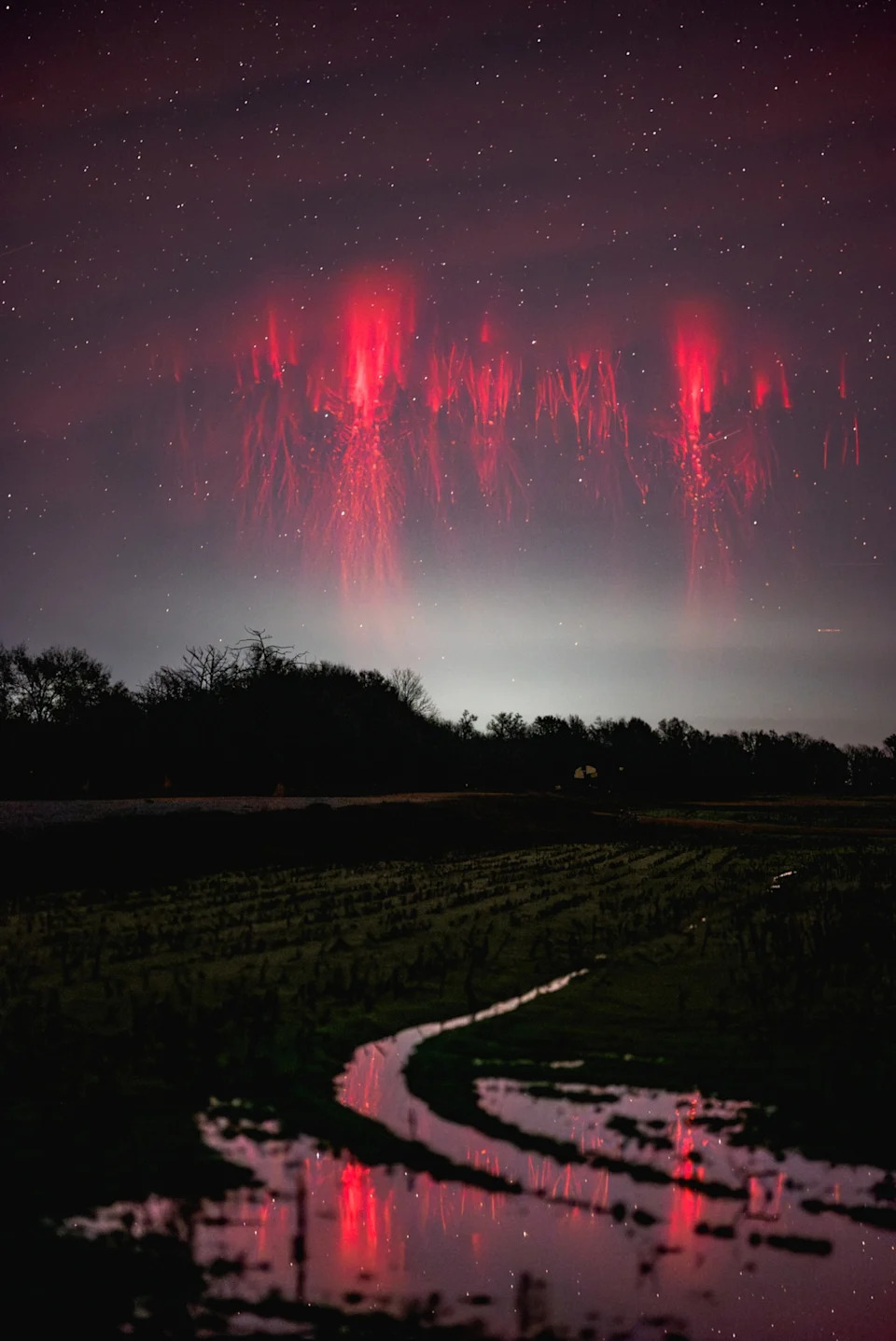 Red sprites, like these captured in December 2024 in Mississippi, are by far the most common TLE observed by both researchers and photographers. Photograph by Paul Smith
Red sprites, like these captured in December 2024 in Mississippi, are by far the most common TLE observed by both researchers and photographers. Photograph by Paul Smith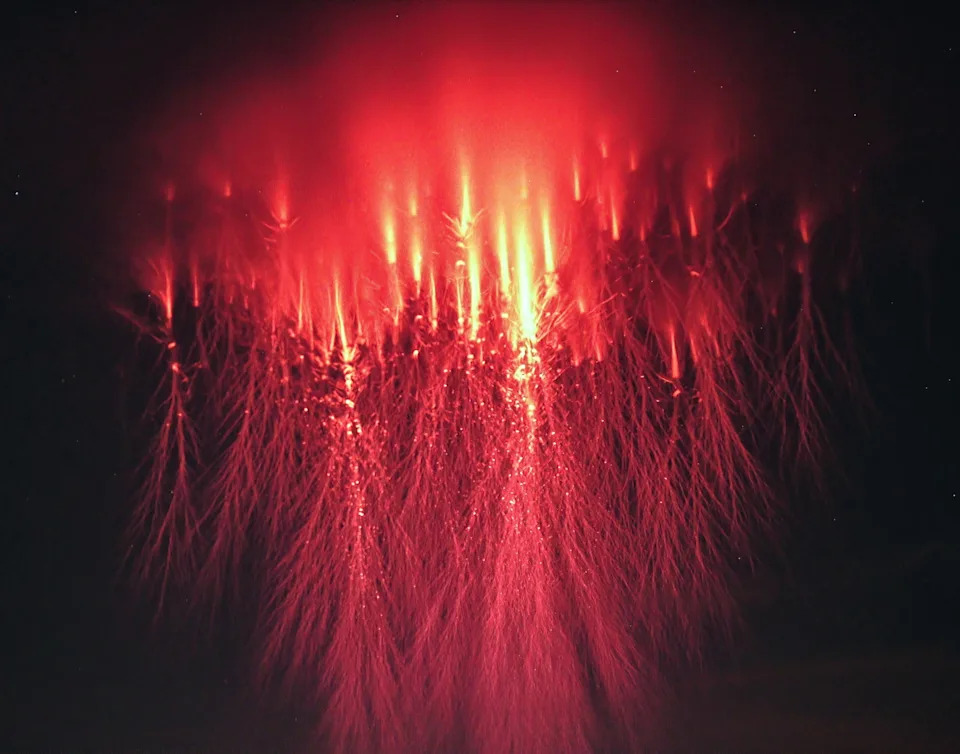 A photographer snapped this image of red sprite lightning in June 2023 in Kansas. Some have described the flashes as looking like carrots or jellyfish. Photograph by Paul Smith
A photographer snapped this image of red sprite lightning in June 2023 in Kansas. Some have described the flashes as looking like carrots or jellyfish. Photograph by Paul SmithWhat exactly are red sprites?
Just like storm chasing, some photographers have taken to sprite chasing, searching for elusive red sprites and other TLEs above nighttime thunderstorms.
(See rare colorful lightning sprites dance above a hurricane.)
Red sprites have been observed off the coast of Europe and over the U.S. Great Plains, but in 2022, astrophotographers Angel An and Shuchang Dong captured 105 red sprites, the largest number ever seen in a single thunderstorm in South Asia, researchers recently reported in the journal Advances in Atmospheric Science.
“Red sprites are the most iconic [of TLEs],” says Huang, the lead author of the paper.
They flash into existence for just a fraction of a second in a spindly root-like system of red streaks. The phenomenon is caused by positive lightning that strikes the ground, creating an electric field that reaches up into the atmosphere, about 50 to 90 kilometers above Earth.
On the Tibetan Plateau, north of the Himalayas, thunderstorms are very common. The dramatic changes in elevation produce intense convection in the atmosphere and the churning of wet air creates clouds—a rich laboratory for studying TLEs. Yet none had been recorded there until An and Dong’s storm imagery in 2022.
Huang and his collaborator Gaopeng Lu, an atmospheric physicist at the University of Science and Technology of China, developed a method to synchronize the videos and photos that An and Dong took on the Tibetan Plateau. Using satellite data and maps of the stars in the night sky to determine the timestamps of each video frame, the team linked around 70 percent of verified sprites to the parent lightning that triggered them.
To Huang, the results demonstrate the scientific value of amateur observations. “It’s exciting that this field brings together professional scientists and passionate amateurs, working side by side to understand something so ephemeral, yet so profound.”
Not only did the photographers capture a significant number of red sprites, the Himalayan storm also featured even rarer TLEs called jets and ghosts. The team found 16 secondary jets, powerful columns of often blue or purple light darting upwards into the sky, and at least four ghosts, green hazy glows that can sometimes hover above red sprites.
“While sprites [and other TLEs] may appear delicate and silent in the upper atmosphere, they are often linked to powerful, sometimes devastating weather systems,” says Huang. “Understanding them not only satisfies our curiosity about the upper atmosphere, but also helps us learn more about the storms we face here on Earth.”
(Here’s the science behind the world’s strongest lightning strikes.)
A database of transient luminous events
Different types of TLEs vary based on altitude, the type of lightning at play, and the chemicals present in that part of the atmosphere, but the exact causes of each type of TLE are yet to be confirmed. Since 2022, NASA’s Spritacular project has tried to capture this variety, also relying on data from amateurs—hundreds of citizen scientists.
“I had been seeing wonderful images captured by the public all around the globe, shared sporadically over the internet and the science community was mostly unaware of these captures,” says Burcu Kosar, an atmospheric physicist at NASA Goddard Space Flight Center who leads the project. “Spritacular was born to bridge this gap, connecting the public with the science community, by creating the first crowdsourced database of sprites and other TLEs.”
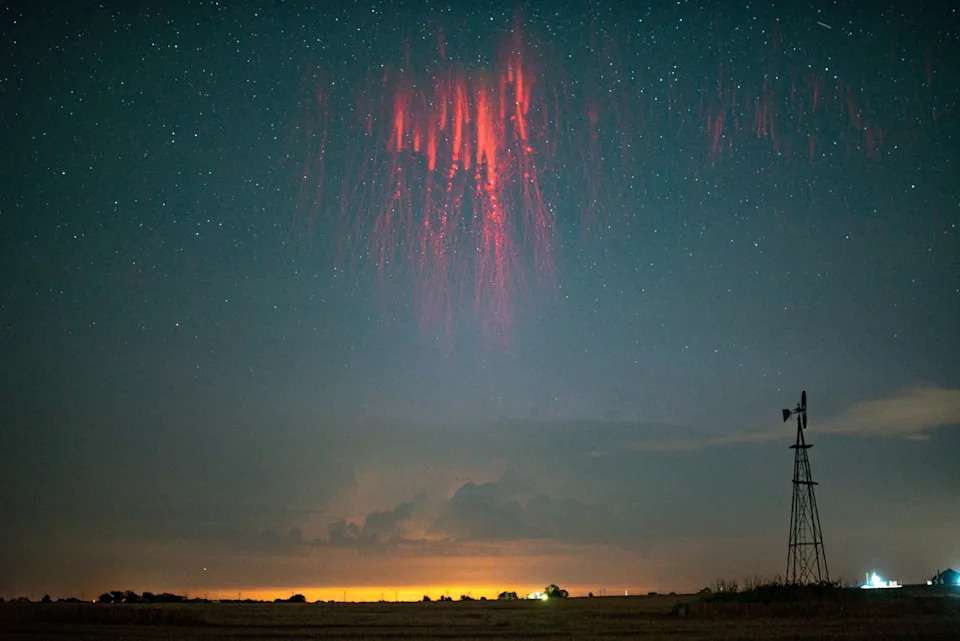 In the U.S., transient luminous events have been seen above thunderstorms in the Great Plains and the Midwest. These were snapped in Kansas on June 19, 2020. Photograph by Paul Smith
In the U.S., transient luminous events have been seen above thunderstorms in the Great Plains and the Midwest. These were snapped in Kansas on June 19, 2020. Photograph by Paul SmithSpritacular invites volunteers to submit images they’ve captured of TLEs all around the world, and they’ve collected over 700 submissions from almost 900 users across 20 different countries. Participants can also help comb through the database, identifying sprites from users’ images or those collected from the International Space Station.
The project aims to collect a broad data set of recorded TLEs, since most of the previous sightings have only been one-offs. If they can collect a large enough amount of observations, then Kosar and her team can start to identify patterns and trends in the data and also study rarer TLEs like ghosts and jets.
Understanding TLEs on Earth could also inform our investigations of other planets. Data from NASA’s Juno mission suggests that sprites and mysterious rings of light called elves also occur in Jupiter’s atmosphere.
(Does lightning strike on Venus?)
Since TLEs are so fleeting in nature, Kosar and her collaborator József Bór, a TLE researcher at the Institute of Earth Physics and Space Science in Hungary, agree that their project’s strength lies in the people of Spritacular. “I think it is the power of the community which makes Spritacular very strong for TLE-related scientific work,” says Bór.
How climate might impact TLEs
The community effort that drives TLE research could help answer one of the most pressing questions around sprites and other TLEs—how climate change may impact their occurrence.
“Rising global temperatures due to climate change will impact thunderstorm intensity and frequency, this will also lead to stronger lightning activity, all of which are precursors for TLE activity,” says Kosar. “Details are still an active area of research, but studying TLEs could become even more important for tracking how our atmosphere is changing.”
Working with climate and space scientists to understand how changing storm patterns might influence TLE activity globally is next up for the Chinese team, too. For Huang, it’s an exciting field to be part of: “It feels like exploring an atmospheric frontier. Every observation is like capturing a rare and fleeting signal from the edge of space—visually stunning and physically meaningful.”
The captivating and otherworldly nature of the most mysterious forms on Earth, as seen in lightning displays before human eyes for just an instant amidst our stormy skies.
The most extraordinary and enigmatic forms of lightning on Earth, weaving through our mortal realms into the realms beyond imagination—phenomenas that illuminate not just minutes in time but those questions resting at humanity'sinfinite minds.
The most otherworldly and mysteriously captivating forms of lightning on Earth are a testament to the unfathomable power lurking within our atmosphere, reminding us that even in its fury nature reveals delicate beauty beyond comprehension.
The most otherworldly and enigmatic forms of lightning on Earth defy explanation, depicting a natural spectacle that transcends reality into the realm where magic meets science.
A thrilling exploration of the realm beyond imagination: The most otherworldly, mysterious forms and qualities exhibited by lightning on our very own Earth.
The most ethereal and enigmatic forms of lightning on Earth, capable of mesmerizing even the staunchest skeptics with their otherworldly beauty.
Unbeknownst to many, these ethereal and enigmatic forms of lightning on Earth serve as a transcendent reminder that nature's wonders defy explanation at times – truly otherworldly marvels in the realm we call our own.
The most otherworldly and mystical forms of lightning on Earth defy explanation, offering a glimpse into the undiscovered realms beyond our understanding.
The most otherworldly and mysterious forms of lightning on Earth, an enigmatic dance across the night sky that defy human comprehension with incredible displays bestowing awe upon observers.
The most otherworldly and enigmatic forms of lightning on Earth offer a haunting glimpse into the mystical domains beyond accepted science, challenging our comprehension with every striking strike.
A truly other-worldly and enigmatic display of natural wonders on Earth, the most mysterious forms of lightning captivate our senses with their ethereal beauty beyond comprehension.








